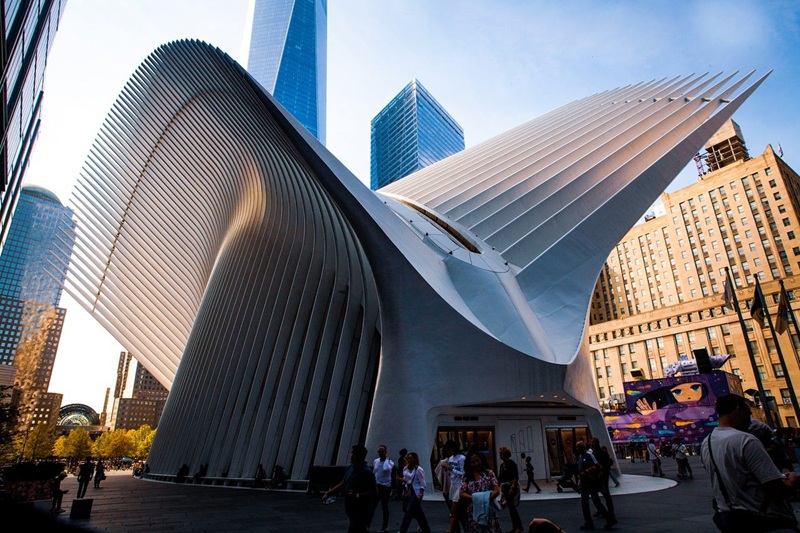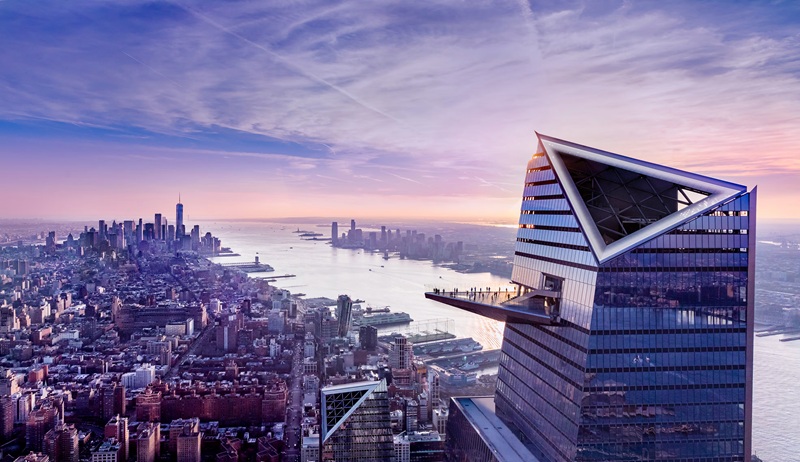
The Oculus, located in Lower Manhattan, is one of New York City’s most striking architectural landmarks. Serving as a transportation hub and retail space, it is also a symbol of resilience and renewal, built as part of the World Trade Center redevelopment following the September 11, 2001, attacks.
Overview and Purpose
The Oculus is the centerpiece of the World Trade Center Transportation Hub, connecting 11 subway lines, the PATH trains to New Jersey, and various pedestrian walkways. It is situated adjacent to the National September 11 Memorial & Museum, providing a seamless transit experience for commuters and a destination for visitors.
In addition to its transportation role, the Oculus houses Westfield World Trade Center, a high-end shopping mall featuring luxury retailers, restaurants, and public spaces.
Design and Architecture
The Oculus was designed by Spanish architect Santiago Calatrava, known for his futuristic and expressive structures. Its design resembles a white dove taking flight, symbolizing peace and hope. The building features a steel framework covered in white ribs, with a skylight running along its spine.
The ribs extend outward and upward, creating a dramatic and open space that floods the interior with natural light. The skylight, called the “Wedge of Light,” is particularly significant—it aligns with the sun on September 11 each year, allowing a beam of light to shine through as a tribute to the victims of the attacks.
Interior Features
The interior of the Oculus is equally stunning, with a massive open space at its center known as the Grand Hall. The hall’s white, minimalist design emphasizes light and space, creating a serene atmosphere that contrasts with the bustling activity of the transit hub.
Visitors can explore two levels of shops and eateries, as well as public art installations and seasonal events that bring vibrancy to the space. The structure’s design encourages movement and interaction, making it both functional and artistic.
Construction and Challenges
The Oculus was part of a broader effort to rebuild and revitalize the World Trade Center site. Its construction began in 2005 and faced several delays and budget overruns, eventually opening to the public in March 2016. The final cost of the project was approximately $4 billion, making it one of the most expensive transportation hubs ever built.
Despite the challenges, the Oculus stands today as a testament to perseverance and ambition, combining practical utility with symbolic significance.
Cultural and Symbolic Importance
Beyond its architectural brilliance, the Oculus holds deep emotional and cultural significance. It serves as a gateway to the 9/11 Memorial and Museum, connecting visitors to the past while looking toward the future. Its design and purpose reflect themes of renewal, hope, and progress.
The Oculus has also become a gathering place for events, art exhibitions, and performances, contributing to the cultural fabric of New York City.
Visiting the Oculus
The Oculus is open to the public and free to explore, making it a must-visit destination for tourists and locals alike. Its central location near landmarks such as One World Trade Center, the 9/11 Memorial, and Battery Park makes it an ideal starting point for exploring Lower Manhattan.
Whether you’re commuting, shopping, dining, or simply admiring its architectural splendor, the Oculus offers a unique experience that captures the spirit of New York City.
Location
Address : 185 Greenwich St LL3110, New York, NY 10006, United States
Website : The Oculus
